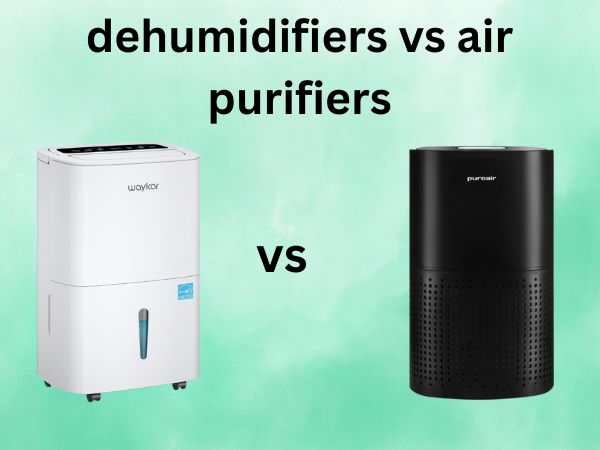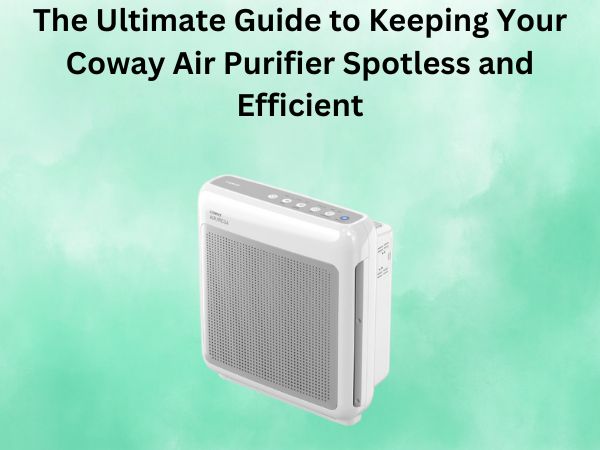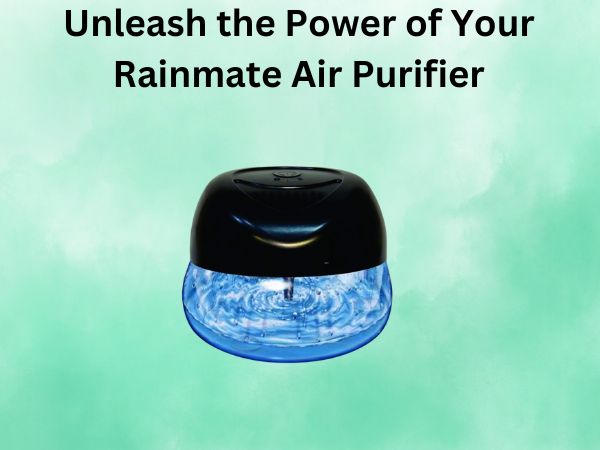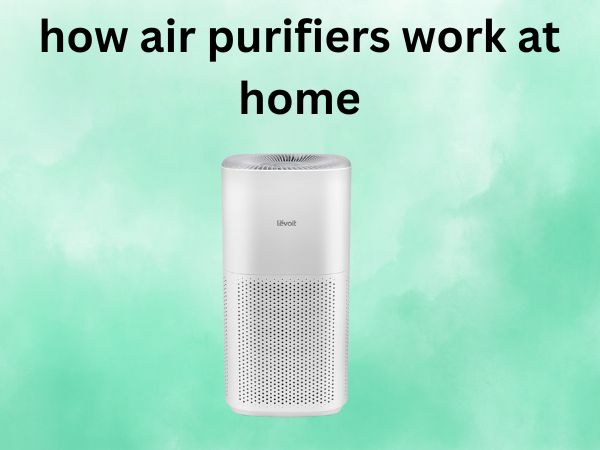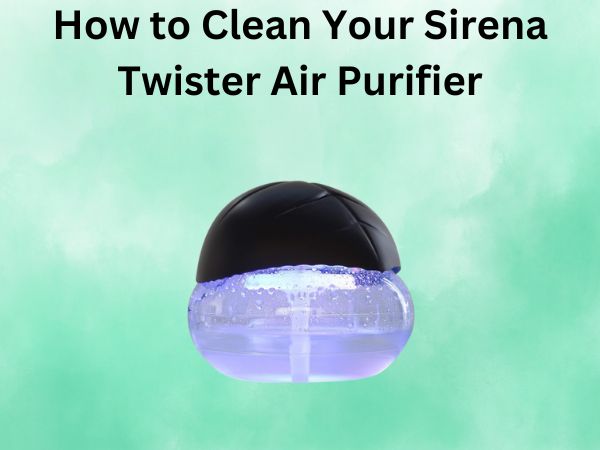Dehumidifiers vs Air Purifiers [Which One Do You Actually Need?]
Are you feeling confused about whether to invest in a dehumidifier or an air purifier for your home? You’re not alone. These two popular home appliances sound similar but actually serve very different purposes. Today, I’m going to break down everything you need to know about these devices so you can make the right choice for your specific situation.
Living in a comfortable, healthy home environment means managing both moisture levels and air quality. But which device addresses which problem? Let’s dive in and find out.
Table of Contents
Understanding the Basics: What These Devices Actually Do
Before we compare these appliances head-to-head, let’s clarify what each one actually does. Despite often being mentioned together, they target completely different aspects of your indoor environment.
What Is a Dehumidifier and How Does It Work?
A dehumidifier does exactly what its name suggests – it removes excess humidity from the air. But how?
Dehumidifiers work on a fairly simple principle. They pull in humid air from your room, pass it over cold coils where the moisture condenses (similar to how water droplets form on a cold drink on a hot day), and then collect this water in a tank. The now drier air is then released back into your room.
Most modern dehumidifiers come with settings that allow you to select your desired humidity level—typically between 30% and 50% is considered healthy. Once that level is reached, the device will cycle on and off to maintain it.
Think of a dehumidifier as essentially a moisture vacuum, pulling the invisible water vapor out of your air and turning it into liquid water that can be removed.
What Is an Air Purifier and How Does It Work?
An air purifier, on the other hand, focuses on removing particles, pollutants, and contaminants from your air. It has nothing to do with moisture levels.
The typical air purifier pulls air through a series of filters designed to trap particles of various sizes. The most common type is the HEPA (High-Efficiency Particulate Air) filter, which can capture 99.97% of particles as small as 0.3 microns—that’s tiny enough to catch most allergens, dust, and some bacteria.
Many air purifiers also include activated carbon filters to absorb odors and volatile organic compounds (VOCs), and some higher-end models incorporate UV light technology to kill germs or ionizers to charge particles so they stick to surfaces rather than float in your air.
In essence, an air purifier is like a bouncer for your home’s atmosphere, keeping unwanted particles out while letting clean air circulate freely.
Key Differences Between Dehumidifiers and Air Purifiers
Now that we understand the basic functions, let’s explore the key differences between these devices in more detail.
Primary Function and Target Issues
The fundamental difference lies in what they target:
- Dehumidifiers target moisture and are designed to solve problems related to high humidity, such as mold growth, musty odors, and that clammy feeling in humid spaces.
- Air purifiers target particulates and are meant to remove allergens, dust, pet dander, smoke, and other airborne contaminants.
This distinction is crucial because if you’re struggling with mold but purchase an air purifier, you might catch some mold spores, but you won’t address the root cause—the excess moisture that allows mold to thrive in the first place.
Conversely, if your issue is pet allergies, a dehumidifier won’t help much because it doesn’t filter out the pet dander that’s triggering your symptoms.
Health Benefits Comparison
Both devices offer health benefits, but for different conditions:
Dehumidifiers can help with:
- Reducing mold and mildew growth (which can trigger asthma and allergies)
- Decreasing dust mite populations (they thrive in humid environments)
- Alleviating respiratory issues exacerbated by humid air
- Reducing musty odors that can cause headaches and discomfort
Air purifiers can help with:
- Removing allergens like pollen, pet dander, and dust
- Filtering out smoke particles and odors
- Capturing airborne bacteria and some viruses
- Reducing exposure to VOCs from cleaning products, furniture, and building materials
If you have specific health concerns, understanding which device addresses your particular issues is essential.
Energy Consumption and Running Costs
Another key difference is in how much energy these devices use:
Dehumidifiers typically consume more electricity because the process of condensing moisture requires significant energy. A medium-sized dehumidifier might use between 300-700 watts when running.
Air purifiers generally use less electricity, with most models consuming between 50-200 watts, depending on the size and filtration technology.
However, there’s a catch—filter replacement costs for air purifiers can add up over time, while dehumidifiers mainly need regular cleaning rather than part replacements (though some do have filters that need occasional changing).
When You Need a Dehumidifier: Signs Your Home Is Too Humid
How do you know if excess humidity is your primary concern? Here are some telltale signs that you might benefit from a dehumidifier:
Health Issues Related to High Humidity
- You notice increased allergy symptoms or asthma flare-ups at home
- Family members are experiencing more frequent respiratory infections
- You wake up congested despite not having a cold
- There’s a constant “heavy” feeling to the air that makes breathing uncomfortable
These symptoms often occur because high humidity creates an environment where dust mites, mold, and bacteria thrive, all of which can trigger health problems.
Property Damage Caused by Excess Moisture
Beyond health concerns, humidity can wreak havoc on your home itself:
- Water stains appearing on walls or ceilings
- Peeling wallpaper or paint
- Warping of wooden furniture, floors, or structural elements
- Musty, damp odors persisting throughout your home
- Condensation regularly forming on windows
- Mold or mildew visible in corners, bathrooms, or closets
If you’re nodding your head to several of these points, a dehumidifier should be high on your priority list. Ideally, indoor humidity should stay between 30-50%. Anything higher creates conditions conducive to mold growth and dust mite proliferation.
When You Need an Air Purifier: Signs Your Air Quality Is Poor
On the flip side, here are indicators that an air purifier might be what you need:
Common Indoor Air Pollutants
First, let’s understand what might be compromising your air quality:
- Pollen (especially during spring and fall seasons)
- Pet dander and hair
- Dust and dust mite particles
- Smoke (from cooking, fireplaces, or cigarettes)
- VOCs from paints, new furniture, or cleaning products
- Mold spores (note: while an air purifier can remove spores, it won’t solve the underlying moisture problem)
Indoor air can actually be 2-5 times more polluted than outdoor air, according to the EPA, making air quality a serious consideration for most homes.
Health Symptoms of Poor Air Quality
Watch for these signs that your air might need purifying:
- Allergies that seem worse at home than outdoors
- Constant sneezing, coughing, or throat irritation without obvious illness
- Headaches that develop after spending time indoors
- Skin irritations or unexplained rashes
- Difficulty sleeping due to breathing issues
- Eyes that feel dry, itchy, or watery while at home
If these symptoms sound familiar, especially if they improve when you leave your home, an air purifier could make a significant difference in your comfort and health.
Can You Use Both Devices Together?
The short answer is yes, and in many cases, this combination provides the most comprehensive solution for indoor air quality issues.
Benefits of Using Both Systems
Using both a dehumidifier and an air purifier can create a synergistic effect:
- The dehumidifier creates an environment hostile to dust mites and mold by removing excess moisture.
- The air purifier then removes any existing allergens, mold spores, and other particles already present in your air.
This one-two punch is particularly effective for people with severe allergies or asthma, as it addresses both the conditions that promote allergen growth and the allergens themselves.
Practical Setup Tips for Dual Systems
If you decide to use both devices, here are some tips for optimal setup:
- Run the dehumidifier first to bring humidity levels under control before focusing on air purification.
- Place devices strategically – dehumidifiers often work best in centrally located areas or particularly damp spaces, while air purifiers should be placed in rooms where you spend the most time.
- Consider the size of your space – both devices come with coverage ratings (usually in square feet), so ensure you’re using appropriately sized units.
- Don’t place them right next to each other as the air currents can interfere with each other’s efficiency.
Choosing the Right Device for Specific Problems
Let’s break down which device works best for common specific issues:
Best Solutions for Allergy and Asthma Sufferers
For allergy and asthma sufferers, the choice depends on your specific triggers:
- If your symptoms are primarily triggered by dust mites, a dehumidifier should be your first purchase, as these pests require humidity levels above 50% to thrive.
- If pollen, pet dander, or general dust cause your symptoms, an air purifier with a HEPA filter will be more effective.
- For those with mold allergies, you’ll need both devices – the dehumidifier to prevent new mold growth and the air purifier to capture existing spores.
Best Solutions for Mold and Mildew Issues
For mold problems, the approach is clear:
- A dehumidifier is essential as it addresses the root cause of mold growth – excess moisture.
- An air purifier with a HEPA filter can help capture airborne mold spores, reducing the spread of existing mold.
- However, neither device substitutes for proper remediation of existing mold – if you already have visible mold, you’ll need to clean or remove it following appropriate safety guidelines.
Remember that mold isn’t just unsightly – it can cause serious health issues and structural damage to your home if left unchecked.
Maintenance Requirements and Considerations
Both devices require regular maintenance to function effectively:
Dehumidifier Maintenance:
- Empty the water collection tank regularly (some models have drain hoses for continuous drainage)
- Clean the air filter monthly (if your model has one)
- Wipe down the exterior and air grilles to prevent dust buildup
- Check and clean the condensation coils annually
- Inspect for proper drainage and clear any clogs
Air Purifier Maintenance:
- Replace HEPA filters according to manufacturer guidelines (typically every 6-12 months)
- Change carbon filters more frequently (usually every 3-6 months)
- Clean pre-filters regularly (often washable, every 2-4 weeks)
- Wipe down exterior surfaces to prevent dust recirculation
- Check for proper airflow and ensure vents aren’t blocked
Neglecting maintenance not only reduces effectiveness but can actually make your air quality worse if filters become saturated and start releasing captured particles back into the air.
Cost Analysis: Initial Investment vs. Long-term Value
Let’s talk money—what can you expect to spend on these devices?
Dehumidifiers:
- Initial cost: $150-$300 for a quality mid-sized unit
- Running costs: Approximately $10-30 per month in electricity (varies by usage and efficiency)
- Maintenance costs: Minimal, mainly cleaning supplies
- Lifespan: Typically 5-10 years with proper maintenance
Air Purifiers:
- Initial cost: $100-$500+ depending on coverage area and technology
- Running costs: About $5-15 per month in electricity
- Filter replacement: $20-100 every few months (varies widely by model)
- Lifespan: 5+ years for the unit itself, though filters need regular replacement
The better investment depends on your specific needs, but remember that health benefits often outweigh the costs for both devices. If budget is a concern, prioritize based on your most pressing issues—moisture control or air filtration.
Frequently Asked Questions
1. Can a dehumidifier help with allergies even though it doesn’t filter the air?
Yes, indirectly. By reducing humidity, dehumidifiers create an environment where dust mites cannot thrive (they need 50%+ humidity) and mold growth is inhibited. Since both dust mites and mold are common allergens, controlling humidity often results in fewer allergy symptoms, even without direct filtration.
2. Will an air purifier reduce humidity in my home?
No, standard air purifiers have no mechanism to remove moisture from the air. Some specialized air treatment systems combine purification and dehumidification functions, but these are distinct from typical air purifiers. If humidity is your concern, you specifically need a dehumidifier.
3. How do I know if the air in my home is too humid without buying a device?
Several signs indicate excessive humidity: condensation on windows or pipes, a musty smell, visible mold in bathrooms or basements, wood that feels damp to touch, or water stains on ceilings and walls. You can also purchase an inexpensive hygrometer (humidity meter) for around $10-15 to get precise readings.
4. Can I use just one dehumidifier or air purifier for my entire house?
For most homes, a single unit won’t effectively treat the entire house unless you have an open floor plan and the device is properly sized for the total square footage. Different rooms often have different needs—bathrooms and basements typically need more dehumidification, while bedrooms might benefit more from air purification for better sleep. For whole-house solutions, consider models that can connect to your HVAC system.
5. Do air purifiers remove cooking odors and smoke?
Yes, but with caveats. Air purifiers with activated carbon filters are effective at removing odors including cooking smells. For smoke, you need a purifier with both HEPA filtration (for particles) and a substantial carbon filter (for the gaseous components of smoke). Simple HEPA-only purifiers will remove some smoke particles but won’t eliminate the odor completely.
Conclusion: Making the Right Choice for Your Home
Choosing between a dehumidifier and an air purifier doesn’t have to be confusing when you focus on your specific needs.
If you’re seeing signs of excess moisture—condensation, musty odors, or mold growth—a dehumidifier should be your priority. It will create an environment where mold, mildew, and dust mites can’t thrive, protecting both your health and your home’s structure.
If allergies, asthma triggered by airborne particles, or concerns about pollution are your main issues, an air purifier will provide more immediate relief by removing those irritants from your breathing space.
And remember, these devices aren’t mutually exclusive. Many homes, especially in humid climates or for people with respiratory sensitivities, benefit greatly from using both. You might start with the device that addresses your most urgent concern, then add the second when budget allows.
The investment in either—or both—is ultimately an investment in your health, comfort, and home preservation. Clean, properly humidified air isn’t a luxury; it’s a foundation for wellbeing that pays dividends in reduced allergy symptoms, better sleep, and even extended lifespan of your home and furnishings.

